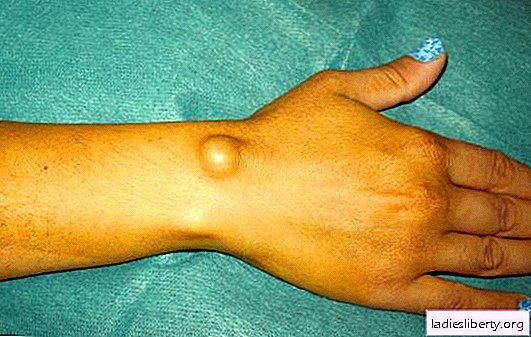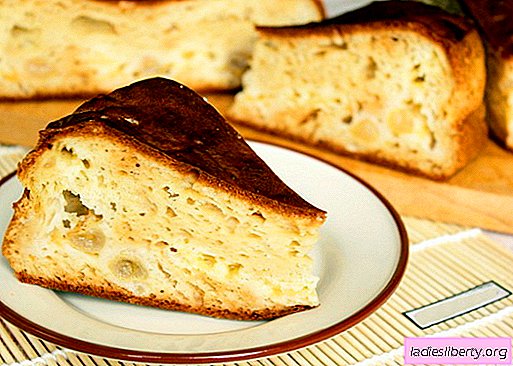
Pyelonephritis is a non-specific infectious inflammatory kidney disease that affects the renal pelvis, tubule, and parenchyma.
In women, the disease occurs five times more often than in men. This is due to the anatomical structure of the urethra: it is wide and short (its length in women is about two centimeters), which allows the infection to quickly reach the bladder and spread higher. In addition, the woman's urethra is located next to the anus and the entrance to the vagina, from where pathogens enter the urethra. In men, the urethra is long, narrow and convoluted - this inhibits the spread of bacteria.
Pyelonephritis is a serious disease, it is better to prevent it than to cure it. It makes up 30% of all diseases of the genitourinary system, i.e. the most common due to the fact that it often proceeds completely asymptomatically, without violating the general condition. Now nephrologists are more involved in treating pyelonephritis than therapists. Over the past 10 years, the number of pyelonephritis decreased by 10 times.
Classification of pyelonephritis:
1 - primary (acute);
- secondary (chronic);
2 - uncomplicated (pyelonephritis occurs in women with normal urinary tract and normal kidney function);
- complicated (pyelonephritis develops on pathologically altered urinary tracts (cysts, etc.) and in case of impaired renal function).
Both kidneys and one of them can be affected.
Pyelonephritis in women - causes
Causes of pyelonephritis in women is conditionally pathogenic microflora, which is normally found in the human body. Most often, pyelonephritis is caused by Escherichia coli - 90% of cases, staphylococci, protea, enterococci and Pseudomonas aeruginosa. The penetration of the pathogen into the kidneys is associated with urine reflux (urine reflux) due to an overflowing bladder due to obstructed outflow of urine due to stones, structural abnormalities, and increased intravesical pressure. In women, due to the anatomical structure of the urethra and its location in the immediate vicinity of the anus, this is a common phenomenon that contributes to the spread of infection in an ascending way.
There is a descending (hematogenous) pathway of pyelonephritis in the presence of a chronic infection in the body.
Predisposing factors of pyelonephritis in women are:
- obstruction of the urinary tract (hydronephrosis may develop against its background);
- existing bacteriuria (may be asymptomatic);
- pregnancy
- advanced age (more often polymicrobial flora is sown; living conditions play a role).
Factors that provoke the development of pyelonephritis in women include:
- subcooling;
- stresses;
- reduced immunity;
- overwork;
- concomitant pathology (diabetes mellitus);
- various diagnostic and therapeutic interventions on the organs of the genitourinary system (catheterization of the bladder in almost all cases leads to pyelonephritis);
- Congenital malformations of the genitourinary system;
- prolapse of the uterus;
- injuries of the spinal cord.
In women, pyelonephritis is most often secondary - it occurs against the background of existing chronic diseases.
Pyelonephritis in women - symptoms
Pyelonephritis is an insidious disease that can occur acutely and chronically.
1. The acute course of pyelonephritis has pronounced symptoms:
- high fever, chills, palpitations;
- pain in the projection of the kidneys or in the side;
- frequent urination;
- small swelling under the eyes and legs;
- manifestations of intoxication: nausea, vomiting, severe weakness, weakness, unmotivated fatigue;
- apathy, irritability;
- changes in the general clinical analysis of blood (leukocytosis, elevated ESR), in the general clinical analysis of urine (the presence of bacteria and white blood cells).
2. The chronic course of pyelonephritis in women characterized by less pronounced symptoms, an erased clinical picture, calm blood (no signs of inflammation), in the urine - a large number of leukocytes, and bacteria may not be. In chronic pyelonephritis in women there are no pathognomostic signs. Symptoms of chronic pyelonephritis in women can manifest simultaneously all or some one or two of the following:
- pain;
- dysuric;
- urinary;
- arterial hypertension.
1. With regard to pain, you need to know that there are no pain receptors in the kidney - they are in the fibrous capsule, and its stretching (with an increase in kidney size) leads to pain. Therefore, pain in acute pyelonephritis is intense and painful, difficult to tolerate, because macroscopically the kidney can significantly increase in volume. With purulent forms, purulent foci occur, provoking increased pain.
The cause of prolonged pain in chronic pyelonephritis in women is the occurrence of adhesions formed between the fibrous capsule and the fat capsule of the kidney. More often the pains are asymmetric, on the one hand - more; moreover, they can occur on the side opposite to the defeat: the process is on the right, and the pain on the left. This is due to the intersection of innervation at the level of the pelvic plexuses. Therefore, it is necessary to look at the ultrasound both kidneys. Pasternatsky’s symptom can be positive not only with pyelonephritis, but also with cholecystitis, pancreatitis.
2. Almost every third woman has signs infections of the lower genitourinary system - cystitis: frequent painful urges to urinate even with an empty bladder, cramping and burning when urinating, the appearance of blood in the urine, discoloration and transparency of urine (dark, cloudy), sometimes with a characteristic pungent smell of fish.
Dysuric syndrome is transient: as inflammation decreases, it goes away.
3. Urinary Syndrome:
- proteinuria - a protein can be detected in the urine; the amount of protein is less than 1.0 g / l; if it is more than 1.0 g / l, which is not typical for pyelonephritis, pyuria (ulcers) or diabetic nephropathy should be excluded, possibly in combination with pyelonephritis, pyelonephritis in combination with glomerulonephritis;
- leukocyturia: normal in women in the urine - up to 8 in the field of view of leukocytes, (in men - up to 4 in s / sp); if there are more than 8 leukocytes in s / sp - this is leukocyturia, indicates the presence of inflammation;
- microhematuria is the presence of fresh unchanged red blood cells up to 40% (more than 40% of red blood cells are observed in diabetes mellitus, ICD, urinary diathesis, trauma, nephroptosis);
- bacteriuria - in case of bacterial inoculation of urine, the type of pathogen and microbial number are determined: normally, the microbial number is up to 105, if 105 or more, it is urgent to start treatment.
Pyelonephritis is dangerous for its serious complications:
- abscess (cavity with pus in the parenchyma of the kidney);
- sepsis (a serious condition that develops when an infection enters the bloodstream can end fatally);
- chronic renal failure.
Diagnosis of pyelonephritis includes:
- general clinical blood and urine tests;
- bacteriological culture of urine;
- Ultrasound of the kidneys (kidney deformation and changes in the renal pelvis are evaluated).
In more severe or incomprehensible cases, urography or CT, MRI of the kidneys are performed, if necessary, a radioisotope diagnosis to assess the state of the parenchyma.
Pyelonephritis in women - treatment
The treatment of pyelonephritis in women is complex, the tactics in the treatment of acute and chronic course are somewhat different.
Treatment of acute pyelonephritis begins with the appointment of symptomatic drugs in connection with a pronounced clinic and severe course. Then the causative agent of the disease is eliminated. In the first few days with acute pyelonephritis, bed rest is necessary (duvet cover), i.e. horizontal position and warm. Be sure to drink plenty.
Treatment of chronic pyelonephritis immediately begins with exposure to the cause of the disease. For this purpose, broad-spectrum antibiotics are used (until the results of bacterial sowing are obtained) and uroantiseptics. Antibiotics are prescribed empirically, the effect occurs in half of the patients. In the future, upon receipt of the results of bakseva, the treatment is adjusted.
The main group of antibiotics relevant in the treatment of pyelonephritis in women is aminopenicillins protected by clavulonic acid: they are less toxic to the kidneys than the rest, and have a wide spectrum of action. In the future, it is possible to replace it with an antibacterial drug of another group, taking into account the result of bacterial seeding. Of the others, besides protected penicillins, cephalosporins of the 3rd and 4th generation (ceftriaxone, cefipim, cefotaxime, etc.), fluoroquinolones (Staflo, Levolet), macrolides (azithromycin, spiramycin, etc.) are used. Effective use of nitrofurans (Furamag, Monural). The course of treatment with antibiotics is 7 to 14 days. Typically, antibiotics are prescribed in tablet form, because after absorption from the intestine, their high concentration remains. Parenteral administration is indicated for severe signs of intoxication: nausea and vomiting.
If after 48 - 72 hours there is no effect, computed tomography of the abdominal cavity is performed to exclude phlegmon or abscess. Bacteriological urine culture is also repeated and the sensitivity of the pathogen to antibiotics is determined. If an additional examination revealed a suppurative process, surgical intervention is required.
A big problem is the development of antibiotic resistance of microorganisms. Currently, penicillin group preparations (ampicillin, etc.) cannot be prescribed, because E. coli, the main causative agent of uncomplicated pyelonephritis, sown in 90% of cases, has natural resistance to penicillins. Also can not be used to treat pyelonephritis 5 - NOC and biseptol!
Fluoroquinolones are empirically prescribed.
Fluoroquinolones of I - II generations are effective in chronic pyelonephritis, caused mainly by Escherichia coli.
In addition to antibiotics are used:
- anti-inflammatory drugs (movalis, diclofenac, paracetamol);
- multivitamins;
- general strengthening agents;
- adaptogens (eleutherococcus, ginseng).
With proper diagnosis and timely treatment, adequate prognosis for pyelonephritis is favorable. A woman is considered healthy if, after discharge during the year, the pathogen in the urine is not determined.











